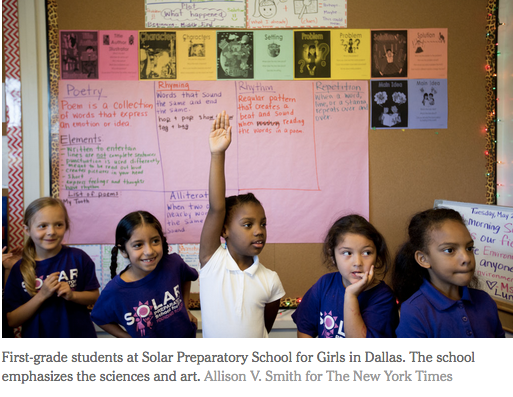Two years ago, under Mr. Hinojosa’s predecessor, the Dallas schools set a goal of starting more than 35 new schools by 2020. Through this effort, Mr. Hinojosa hopes to reverse enrollment declines and increase student achievement, while wooing college-educated and white families that may have never before considered public education in Dallas.
Some of the schools, in fact, make no secret of whom they are trying to draw: Half of their seats are reserved for students from middle- or higher-income families, and some are set aside for students living outside the district.
“Every major city in America has to find some way to deal with this issue,” Mr. Hinojosa said. “When you have a mix of kids, the affluent kids don’t suffer and the children of intergenerational poverty do better.”
Dallas is one of just a handful of cities trying ambitious integration programs, even though nationwide, public schools are more segregated today than they were in 1970.
A third of black and Hispanic students attend schools that are more than 90 percent nonwhite, according to research from the Century Foundation, and those racially segregated schools are overwhelmingly low-performing. Research shows that poor children who attend school alongside more privileged peers score higher on standardized tests and earn more money as adults.
Districts Fight Segregation on Their Own
The Trump administration made a terrible decision this spring when it killed a modest grant program that was intended to promote integration in this country’s profoundly segregated public schools.
Fortunately, districts in scores of states — including Dallas, a segregated city with a lurid history of fighting desegregation — have recognized the dangers of racial and socioeconomic isolation and are taking steps to bring together children of different backgrounds.
It may come as a surprise to many Americans who grew up in an era of court-ordered integration, but this country’s public schools are more racially segregated today than a half century ago, with three-quarters of black and Hispanic children attending schools where most students come from low-income families. That’s true for only about a third of white children.




